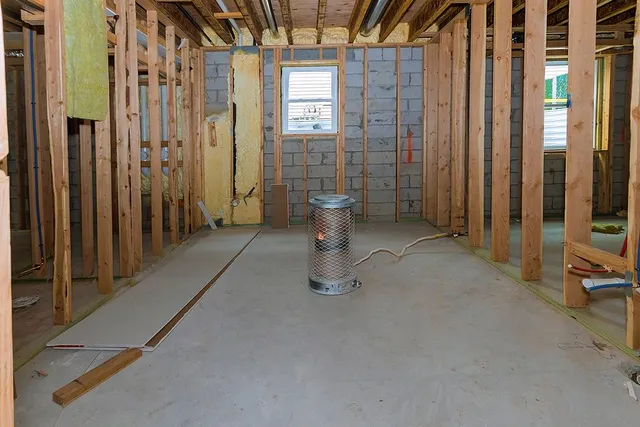
Not every construction project should default to wood. Sometimes, the smarter choice is a material that offers better resistance to fire, moisture, and pests while being easier to work with. Aluminum framing stands out in situations where durability, adaptability, and longevity are key considerations.
Scenarios Where Fire Resistance Makes Aluminum the Clear Choice
When fire safety is a top priority, aluminum framing provides a significant advantage over wood. Unlike wood, which burns and weakens under intense heat, aluminum does not catch fire or contribute to flames spreading. This makes it an excellent choice for buildings in areas prone to wildfires or commercial projects where strict fire codes must be met. Its ability to withstand extreme heat without warping or failing makes it a safer and more reliable material in fire-sensitive environments.
Fire-resistant construction is essential in settings such as industrial facilities, data centers, and residential buildings that require added protection. Wood framing, even when treated with fire-resistant coatings, can still burn, char, and degrade over time. In contrast, aluminum framing holds its structural integrity even when exposed to high temperatures, ensuring that buildings remain secure and compliant with fire safety regulations.
Areas Prone to Pests Where Aluminum Provides Worry-Free Durability
Termites, carpenter ants, and other wood-destroying pests can turn a solid structure into a maintenance nightmare. In regions where infestations are common, aluminum framing eliminates the risk of structural damage caused by insects. Unlike wood, aluminum does not serve as a food source for pests, making it a long-term solution that requires little upkeep.
Wood-framed buildings in humid or wooded areas are especially vulnerable to pests, leading to expensive treatments and repairs over time. Homeowners and businesses in these areas can avoid these issues altogether by choosing aluminum framing. Its pest-proof nature means there’s no need for chemical treatments or constant inspections, providing peace of mind and long-term cost savings.
Weight-Sensitive Structures That Benefit from Aluminum’s Lighter Build
Certain construction projects require materials that are strong yet lightweight. Aluminum framing offers exceptional strength while being significantly lighter than wood, making it ideal for structures where reducing weight is essential. Whether it’s a rooftop addition, a modular building, or a transportable structure, aluminum framing minimizes stress on the foundation and support systems.
Wood can be bulky and difficult to maneuver, particularly in projects where weight constraints are strict. In contrast, aluminum is easier to transport, lift, and install, allowing for quicker assembly without compromising durability. This makes it a preferred choice for architects and builders working on multi-level buildings, temporary installations, or structures that need to be moved or adjusted over time.
Situations Where Frequent Modifications Demand Aluminum’s Flexibility
Some structures require frequent changes or expansions, and aluminum framing makes modifications easier. Whether it’s a commercial space that needs regular layout adjustments or a residential project requiring future expansions, aluminum allows for effortless reconfiguration. Its modular nature makes it simpler to add, remove, or rearrange components without the hassle of cutting and reinforcing wood.
Unlike wood framing, which can splinter, crack, or become structurally unsound when modified, aluminum retains its strength even after multiple adjustments. This makes it an excellent choice for offices, trade show displays, and temporary structures where flexibility is a necessity. Builders and designers working with aluminum framing can adapt layouts quickly, reducing downtime and labor costs associated with modifications.
High-Humidity Environments Where Aluminum Outlasts Wood
Moisture is a major threat to wood construction, leading to swelling, warping, and rot over time. In areas with high humidity, aluminum framing provides a rust-resistant, non-absorbent alternative that maintains its form and function regardless of environmental conditions. It does not absorb water or expand and contract with temperature changes, ensuring stability and longevity.
Wood structures in humid climates require constant maintenance, including sealing, staining, and repairs to prevent moisture damage. Aluminum framing eliminates these concerns, making it ideal for coastal homes, pool enclosures, and buildings in tropical climates. Its ability to withstand humidity without deterioration ensures that structures remain strong and visually appealing for years to come.
Rapid-Build Projects Where Aluminum’s Quick Assembly is Crucial
For projects with tight deadlines, aluminum framing offers a faster, more efficient construction process. Its lightweight properties make it easier to transport and assemble, reducing labor costs and installation time. Unlike wood, which often requires extensive cutting, measuring, and adjustments, aluminum components are prefabricated for seamless assembly.
Speed is a key factor in temporary structures, emergency shelters, and large-scale commercial builds that must be completed quickly. Aluminum framing allows crews to work more efficiently, ensuring that projects are finished on time without sacrificing structural integrity. Its ease of use makes it a preferred material for fast-paced construction environments where efficiency and reliability matter.